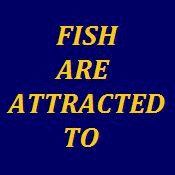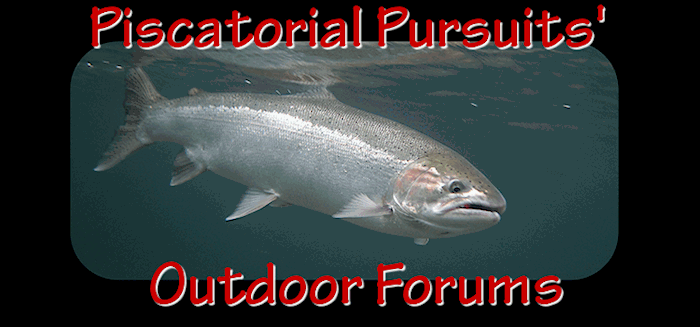The Salmon and Steelhead
Hatchery Fish
Controversy, Part VII
Ernest L. Brannon, University of Idaho--March 4, 2005
Hatchery Genetic Risks and Benefits
Hatcheries fish are often alleged to have lower genetic diversity and fitness compared to fish in the wild. That is largely folklore. Genetic diversity in salmon and steelhead populations is extensive, and within-population diversity usually exceeds the diversity that exists between populations. Diversity is usually measured in what geneticists refer to as alleles in the molecular structure of DNA. Alleles are variations in the chemical signature of a specific molecular entity along the chain of entities (alleles) of the DNA. Diversity is usually a measure of quantitative differences in the frequency of those entities rather than fixed differences in the alleles themselves. For example, if there are two variations of an allele, which can be called a and b, the frequency in one population might be 80 a and 20 b, while in another population it may be 13 a and 87 b. The geneticists would conclude that the populations are different, not because they have fixed allele differences, but because the frequencies are different. Moreover, these alleles are considered neutral, which means they have no measurable effect on the organism and are not subject to natural selection. Therefore, frequency differences have no relationship to survival and reproductive fitness, suggesting that caution must be exercised in how these metrics are interpreted in assessing risk associated with artificial propagation. Variability in allele frequencies occurs regularly within natural populations, even between brood years, and should not be used as surrogates of real survival traits.
The ability to survive involves many different genes. Theory says that low levels of gene flow (1 to 10 individuals/generation) between populations will prevent differentiation. Gene exchange between hatchery and wild fish in a river segment is much higher than that level, and consequently the level of differentiation between wild and hatchery fish originating from the same gene pool will be very limited. If attempts are made to minimize genetic alterations in the hatchery segment of the population, the major influence separating the hatchery and wild components will be temporary behavioral characteristics acquired in the hatchery, and these rapidly disappear by the next generation in the wild, if not shortly after experiencing the natural environment.
Risks attributed to artificial propagation are legitimate concerns, but they are also largely theoretical, with limited evidence of any risk from artificial propagation in actual supplemented populations. Spawn timing is a genetic trait that has the most significant influence in salmonid fitness, and is the only alteration that has been associated with hatchery propagation in field studies on performance of hatchery and wild fish. However, alterations in spawn timing are easily avoided with an artificial spawning protocol that follows the native regime.
Phenotypic flexibility is also a critical fitness trait of salmonids, and is probably most evident in their response to temperature. Because fish are cold-blooded, incubation rates of salmonid embryos are highly variable depending on the temperature regime, as shown in work conducted by Tang et al. in 1987, Spawn timing in the wild is synchronized genetically with the incubation temperature of the natal stream to correctly position fry emergence in the spring. Altered emergence timing in hatcheries can be avoided simply by using the natal stream source as the water supply.
Genetic risks are associated with outbreeding (mixing of different populations), inbreeding (loss of diversity), and domestication (unintentional effects of artificial propagation). However, outbreeding depression has been primarily a problem created by the distribution and mixing of stocks in fisheries management. Long-term effects of outbreeding in natural populations has not been demonstrated. While the postulated negative effects are largely theoretical, possible beneficial effects may also occur in some cases by enhancing diversity.
Inbreeding is related to the effective population size, and much of the concern can be resolved by increasing the number of breeders and representing the diversity of the native population. Inbreeding can also be a problem in small, isolated natural populations.
Domestication represents the most likely genetic influence in hatchery fish, but selective mortality in the hatchery is relatively low, reducing its potential. There has been little research to determine whether selection in the hatchery results in higher egg to adult mortality than what occurs among wild fish. Much of the domestication evidence comes from aquaculture of captive populations that has little relevance to fish in the wild.
Artificial propagation has benefits beyond greater fishing opportunities. In contrast to the risks, benefits have not been given much attention in wild/hatchery fish evaluations. Artificial propagation is a tool to maintain population structure in the presence of potential negative environmental stochastic influences and the fishery. Hatchery fish represent the adaptive legacy of their originating population, and increasing population size through artificial propagation to avoid inbreeding, as well as maintaining genetic diversity, are benefits. With low mortality in hatcheries, rare alleles can be preserved during their freshwater rearing phase, and if they are beneficial, they have a chance to express that advantage in subsequent generations of the population. Hatcheries serve as repositories of genetic material, and the carcasses of hatchery fish are a source of nutrient recruitment in freshwater streams.
Contrary to the hatchery critics, artificial propagation should be viewed as a powerful tool in the conservation of wild fish that can be relatively free of long-term genetic risks, when working with local broodstock. Using integrated hatchery/wild fish, population structure of the native fish can be maintained in the presence of reduced habitat, marine related population crashes, and selective fisheries.
(References can be found in Fisheries 29(9):12-31).
Dr. Ernest L. Brannon is a professor at the Center for Salmonid and Freshwater Species at Risk, University of Idaho, Moscow. He is also Chairmen of the Salmon Committee for the Salmonid Foundation
_________________________
South King County Puget Sound Anglers















 Previous Topic
Previous Topic Index
Index

